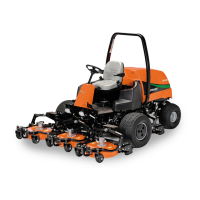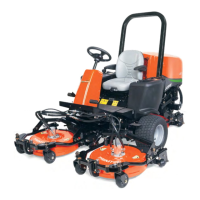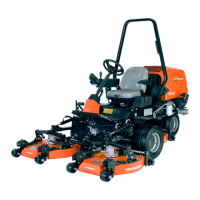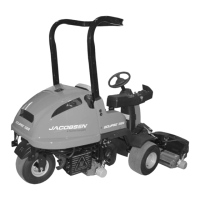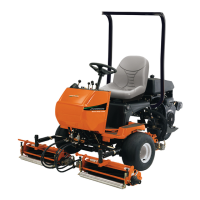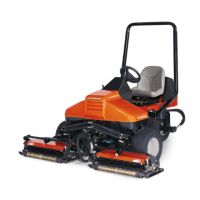STEERING
4181384 First Edition 7-5
7
Tests and Adjustments
Steering Leakage Test
See Figure 7-2.
1. Operate hydraulic system until oil temperature is at
120—150°F (49—65°C).
2. Turn steering wheel fully right against stop.
3. Park the mower safely. (See “Park Mower Safely” on
page 1-7.)
!
WARNING
Figure 7-2
4. Disconnect hose (2) from steering cylinder. Plug
hose.
5. Position a measuring container under steering
cylinder fitting (1).
6. Start the engine and set engine speed to full throttle
(3150 rpm ± 50).
!
WARNING
7. Turn steering wheel fully right against stop.
8. Measure leakage from fitting (1) for 15 seconds.
9. Stop the engine.
Is steering cylinder leakage a nominal amount of
oil or less?
YES Go to step 10.
NO Repair or replace steering cylinder. (See
“Steering Cylinder” on page 7-10.)
10. Disconnect and plug hose (3).
11. Start the engine and set engine speed to full throttle
(3150 rpm ± 50).
12. Turn the steering wheel fully right, then fully left.
Does the steering wheel continue to turn past the
stop with little or no resistance?
YES Steering valve is faulty; replace steering
valve. (See “Steering Valve” on page 7-7.)
NO Steering valve is good. Test complete.
The hydraulic system is under pressure, and the
oil will be hot.
• Always relieve pressure in the hydraulic
system before performing service.
• Failure to follow appropriate safety
precautions may result in death or serious
injury.
TN1217
1
2
3
Do not turn steering wheel to the left.
Failure to follow appropriate safety precautions
may result in death or serious injury.

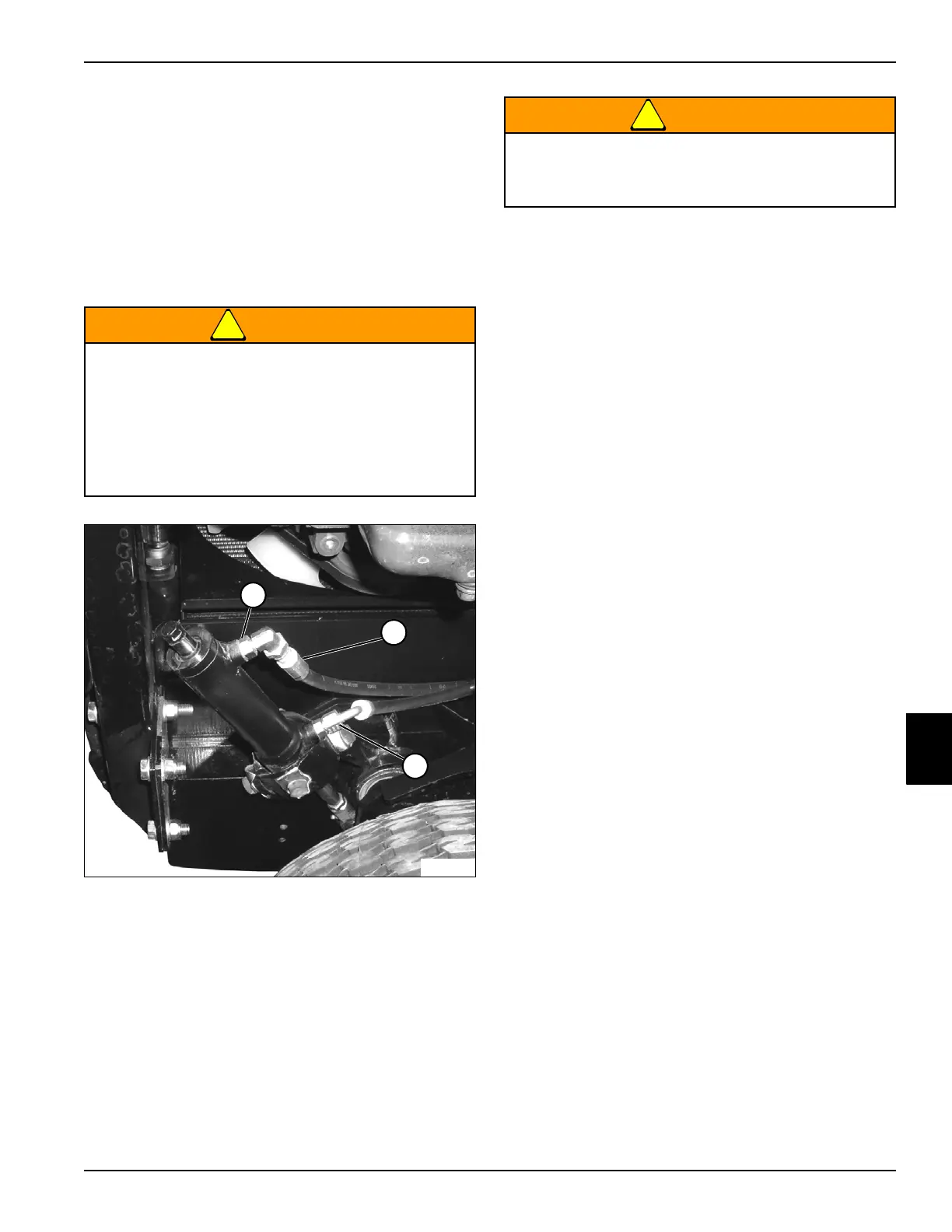